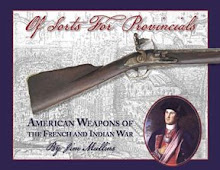Moravian Rifles
Edward Marshall’s Rifle- further discussion can be found here
Moravians arrived in North Carolina from Pennsylvania to establish a settlement and industry at their land termed "Wachovia" as early as 1753 (first establishing a village at Bethabara and subsequently Salem). The community included gunsmith Andreas Betz, his apprentice Joseph Muller, the gun-stocker Johan Valentine Beck and locksmith/gunsmith Johan Jacob Loesch (Jr.); who are discussed in Eric Kettenburg's excellent article Moravian Artisans in North Carolina. Having local gunsmiths did not end the importation of Moravian made rifles from Pennsylvania (likely due to the demands of other projects in the new settlement):
"1757 May: Sundry Accounts...Dr ye Locksmith (at Bethlehem) Abraham Steiner for a Gun for Jacob Steiner in Wachovia. £3.10." (Moravian Gun making of the American Revolution p. 24)
Kettenburg's article notes a "1758 request to provide Betz with his own gunsmith shop (separate from the smithy) indicates an increased need for repair work, possibly amongst the arms off the Brethren themselves but also very likely amongst the increasing number of 'strangers' utilizing the services of the Moravian tradesmen."
Arthur Dobbs mentions "thirty men on horseback armed with muskets and rifled guns" in a 1762 letter from Brunswick.
War of the Regulation
The Journal of William Tryon's journey to Hillsborough
"Deep River Camp, Fryday 16th Sept: 1768.
Parole—Hillsborough.
The Guard upon His Excellency's Quarters and camp guards to be furnished by the Mecklenburg Battalion and to mount as usual.
The Captain of each Company to inspect the Arms and Ammunition of the men and to see that the lead that was delivered to them is run into bullets of a proper size for their rifles. As this is an essential duty the Governor recommends it to them to observe it with great punctuality, and make report to-morrow morning of the condition of the Arms and Ammunition to the commanding Officers of their respective regiments who will make report of the same to His Excellency to-morrow morning before the Troops march."
An account of the battle of Alamance in 1771 (SC Gazette May 30, 1771) mentions Regulators "Sculking being Trees and Bushes with their Rifles loaded..." Rifles were present on the side of Governor Tryon's forces as well, and compensation was requested for several rifles that were lost in the battle.
Pennsylvania sources
In an older post I discussed the flow of goods from Pennsylvania to the Southern back country via the great wagon road (vs the water route to Kentucky via Fort Pitt). William Sample Alexander operated a wagon train between Mecklenburg County, NC and Chester County, Pa. (tip of the hat to the "Clothing the Carolinas" Blog for posting the link). Two entries from the William Sample Alexander Diary (1770-1778) provide some interesting info as to the possible source of a 1770s rifle manufactured in Pennsylvania that was purchased through Alexander and delivered to a North Carolina customer (these two may be different purchases but I suspect the pricing discrepancy is from conversions between currency in North Carolina and Pennsylvania.
"For Capt Jas. Alexander1 ryfal [rifle] gun
3 feet 7 Inches Inches long light and handy received 4 dollars-"
William Sample Alexander Diary #1504-z, Southern
Historical Collection, The Wilson Library, University of North Carolina at Chapel
Hill.
"...4£ 10/ to dickert for gun..."
William Sample Alexander Diary #1504-z, Southern
Historical Collection, The Wilson Library, University of North Carolina at Chapel
Hill.
An early Jacob Dickert rifle from Rock Island Auction
An early Jacob Dickert rifle from Rock Island Auction
Kentucky Rifle Foundation display of Jacob Dickert rifles 2019 Eastern Pa. Longrifle show














